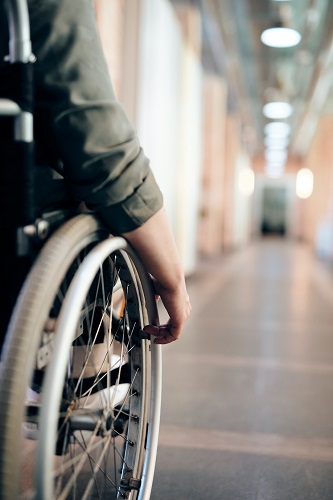An individual tends to feel extremely weak, tired, and restless during and when recovering from an illness. The patient has to be dealt with extreme care to avoid any accidents or mishaps. If a patient’s movement is limited and requires wheelchair assistance, then specific steps must be followed to move a patient from the bed to the wheelchair.
This article demonstrates a technique to assist patients who can use one leg to move from their bed to the wheelchair. If the patient concerned cannot stand on one leg, they must be transferred using a lift.
You must fully understand how to transfer the patient from the bed to the wheelchair before you start. Always remember to get assistance if you are skeptical about being able to support the patient alone. Another precautionary measure that must be taken before transferring the patient is to check the flooring to ensure that you don’t accidentally slip or trip. It is recommended that you wear non-slippery shoes, and the patient should wear non-skid socks to prevent any misfortune.
First, you need to ensure that the patient is aware of the procedure. Second, the transport wheelchair needs to be parked right next to the bed. It should be close to the patient and you, so the patient doesn’t have to walk longer. Third, check the brakes of the wheelchair and make sure they are in place. Move the footrests on the sides to avoid any hindrances and seat the patient comfortably.
The patient should be sitting in an upright position on the bed before transferring them to the wheelchair. As discussed earlier, the patient could feel weak and tired, so let them sit on the bed for a few minutes before any movement if the patient tends to feel a little dizzy. If the patient feels fine after a few minutes, then follow the following steps:
- Make the patient sits on the bed and then roll them towards the same side of the bed on which the wheelchair is parked.
- Now, bend slightly to place one of your arms under the patient’s shoulder while the other should firmly be behind the patient’s knees.
- Keep the patient’s feet off the edge of the bed, make use of the momentum and assist them in a sitting position.
- Next, you need to move the patient to sit on the edge of the bed. Lower the bed now so the ‘patient’s feet can comfortably touch the ground.
USING PIVOT TURN
One recommendation here would be to have a gait belt. The belt can be placed on the patient allowing a better grip during the transfer and preventing any falling chances. When you turn the patient onto the side, they can either take support from you or the wheelchair. One important tip here is to make sure you are standing near the patient at all times so they can reach out to you for any support if they feel any dizziness or fear falling.
Now you need to reach around the patient’s chest, grip them firmly by locking your hands around the patient, or you can grab the gait belt to hold them in position. When you are confident that the grip is firm and the patient is safely in place, follow these steps:
- Place the patient’s leg right between your knees to provide the support needed. Make sure your back is straight, and the knees bent.
- Slowly stand up while counting to three using your legs to lift.
- The patient should keep their hands on their sides and use them to push themselves up from the bed.
- Ensure that the patient transfers most of their weight on their good leg to avoid pain and discomfort.
- Now, pivot towards the wheelchair. Move your feet in a manner that your back is aligned with your hips maximizing the support.
- When the ‘patient’s leg can touch the seat of the wheelchair, bend your knees, lowering the patient to the seat. Ask the patient to reach the ‘wheelchair’s armrest for further support.

